BACK
Choosing your Rhododendron
Rhododendrons are easy to grow and flowering from autumn to early spring the attractive clusters of bell-shaped flowers make them a popular colourful addition in the garden during winter. Flower colours include –white, pink, red, purple, blue and yellow, with many hues of each.
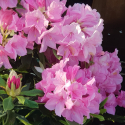
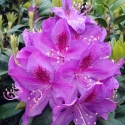
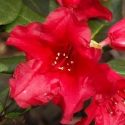
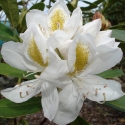
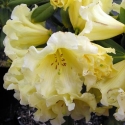
Space Consider the height and width of the mature tree.
Variety There are literally in excess of 1000 Rhododendron cultivars available, and while the conditions listed below are general, some of the newer varieties have specific soil and light requirements – always check the plant label, our website or talk with nursery staff to get information pertaining to the Rhododendrons you choose.
Situation They love sunshine in winter, but plants prefer dappled sunlight in summer and require shelter from strong winds. Generally, the smaller the Rhododendron leaf the more sun tolerant they are. They will grow well underneath the canopy of a deciduous tree.
Soil Moist well-drained Acid soil (lime free) – ideally pH 4.5 – 6. The addition of well-rotted compost, organic material such as sheep pallets or horse poo before planting can improve drainage, encourage the plant to settle into its new environment and helps maintain moisture. Improve soil health and acidity by adding Peat Moss or Coffee Grounds.
Water Rhododendrons are shallow rooted and will need regular watering in their first year to encourage them to settle into their new environment. Once established, if there is no rain about for a few weeks and the soil is very dry, water and give your plants a nice soak; allow the soil to dry off before re-watering. Keep moist (not wet) when Rhododendrons are in the growing season
.
Feeding Plant with slow-release fertiliser and fertilise again in spring and autumn - feed your Rhododendron with fertilisers formulated for acid loving plants.
Pruning Choose your plant for desired height and width so you don’t have to prune back hard. Dead-head plants after flowering, helps to create a bushy plant, and avoids the need for heavy pruning.
Problem Solving
Yellowing leaves can indicate a mineral deficiency – fertilising can correct this; we recommend applications of Rhododendron specific plant food.
Leaf wilt – this could indicate your plant is over-watered or the water is not draining away. Check the moisture in the soil by digging a hole near the plant and if water is pooling you need to improve the drainage. Check with nursery staff.
BACK
HL Nurseries Limited t/a Wairere Nursery
826 Gordonton Road, R D 1, Hamilton 3281 Ph: (07) 824 3430 Email: